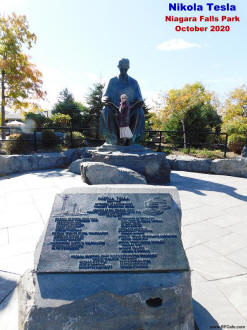Power Equivalent in the Electricity-Water Analogy
|
||||||||||||||||||||
|
1 | 2 | 3 | 4 | 5 | 6 | 7 | 8 | 9 | 10 | 11 | 12 | 13 | 14 | 15 | 16 | 17 | 18 | 19 | 20 | 21 | 22 | 23 | 24 | 25 | 26 | 27 | 28 | 29 | 30 | 31 | 32 | 33 | 34 | 35 | 36 | 37
The ARRL Ham Radio License Manual, 4th Edition. 2018-2022. The spiral-bound format is recommended since it lays flat on any page. Have I mentioned that my YL, Melanie, decided she would earn her Amateur radio Technology license? After living in a household with a bilingual husband (English and Electronics) for nearly 38 years and having become fairly proficient at ETL (electronics as a second language*), Melanie decided to earn her Technician license. She has never delved into the technical aspects of electricity / electronics, but because of hearing me speak of it (too) often and having proof-read my writings and scanned and OCR'ed more than a thousand articles from vintage electronics magazines, her gray cells are permeated with the vocabulary, lingo, jargon, vernacular, slang, and argot of the realm. Being an expert test taker, she will undoubtedly pass the written test with flying colors. With much self-restraint, I have avoided offering my sage advice and knowledge during her studies of the ARRL's Ham Radio License Manual. The current edition is the 4th, being valid from 2018 through 2022. Melanie has asked for a little clarification on SWR, decibels and couple other minor topics, but otherwise has progressed without difficulty. Her method of study is similar to mine where she will read the manual cover to cover and then begin reviewing the question pool and understanding how the correct answers are derived. It will probably be sometime next spring when she is ready for the written test. While on the section about circuit theory and Ohm's law, Melanie asked a question about the water/electricity analogy that I didn't have an immediate answer for because I do not remember ever having seen or heard it before. It is doubtful that anyone involved in electricity or electronics is not familiar with the much-used analogy between electrical volts, current, and resistance with water pressure, flow, and constrictions, respectively. Wikipedia has an entry on it entitled "Hydraulic Analogy" in case you are not familiar with it, so I will not elaborate. Her poser question was what is the water equivalent of power? I had a conceptual idea, but not something I would commit to on paper (which I'm about to do). A not-too-deep search on WWW did not turn up what I deemed was a good answer. It never comes up in most discussions and at least one I found seemed to me to be wrong. Here is where I put my reputation on the line by attempting to present an answer, kinda. It is not a rigorous proof, but does use the similarity approach at the end. First, some definitions and units:
Speaking of Niagara Falls, my sister, niece, and grand-niece from Maryland went with Melanie and me to visit relatives in Buffalo, where we stopped to watch the awesome power of the water. Melanie gracing the Nikola Tesla statue at Niagara Falls State Park.
From Ohm's law (electricity): PE = V • I = (J/C) • (C/s) = (J/s) = (energy/time) From Neptune's law (water): PH = P • F = (N/m2) • (m3/s) = (N•m/s) = (torque†/time) In the dimensional analysis you can see that the unit of electrical power (PE) is energy divided by time, and the unit of water (hydraulic) power (PH) is torque divided by time. That implies if torque is also a unit of energy, then PH is a unit of water power. In fact, torque is a unit of energy related to the kWh by a multiplication constant. I again defer to Wikipedia to describe the relative equivalencies of various forms of power. Note the one reference to a motor (or generator) power being a product of torque, similar to the water analogy result. † This is not necessarily torque per se, but has the familiar units of torque, so that is what is used because it can be related to energy. While all that shows conceptually that the electricity/water analogy extends volt/pressure, ampere/flow, and resistance/friction to power, it still does not offer a physical equivalence of the two types of power - Melanie's original question. Power in physical terms can be thought of as the rate of change in potential energy of a volume of water falling from the top to the bottom of Niagara Falls. EPotential = mWater * g * (htop - hbottom) Your alternate analogy is welcome and will be posted here with your permission. Adams Transformer House, Future location of the Tesla at Niagara Museum * BTW, Melanie was already trilingual with proficiency in English, German, and Music (reading & playing).
Posted October 29, 2020 |
||||||||||||||||||||
 "
"



